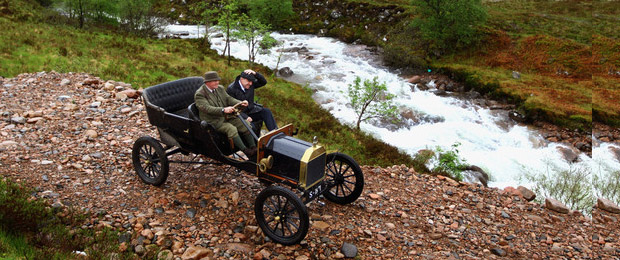 When Henry Ford instituted the $5 per day salary for his assembly line workers at the River Rouge works, the world’s first assembly line where the famed Model-T, “everyman’s car,” was built, many in the car industry thought that either he was a genius or he had lost one or two main bearings in his crankshaft.
When Henry Ford instituted the $5 per day salary for his assembly line workers at the River Rouge works, the world’s first assembly line where the famed Model-T, “everyman’s car,” was built, many in the car industry thought that either he was a genius or he had lost one or two main bearings in his crankshaft.
Ford, though, was as cagey as an old Fox when he instituted his standardized salary. It gave his workers an incentive to work and to remain on the line until all the jobs were done. Until that time, most cars were handled as piecemeal affairs. Certainly, there were some lines where things like transmissions and engines were cast, but the rest of the auto was a “paint by the numbers.” operation where groups of coach-builders came together to put the interiors together after the body guys bolted the body to the ladder frame. And, we mustn’t forget the driveline guys who put in the engines and drivetrains and made sure that the “front wheels didn’t turn backward and the rear wheels didn’t turn front.”
Ford saw that this only raised cost for the auto industry so he looked at how to put cars together and saw that if the chassis moved along a line at a set rate of speed with various people hanging parts off of it, cars could be put together much more inexpensively and that the $5 per day salary was justified.
The quality was just as good or better than the “mostly made by hand” cars, so Ford’s assembly line techniques were studied and adopted by the rest of the industry.
Ford didn’t stop there, though. Until the Model-T became popular at the huge (in 1910 it was huge) price of $600, cars were thought of as the realm of the wealthy. After all, it was believed that the wealthy had their rights and privileges and one of them was the motorcar with the chauffeur. “Cars for the masses? Many of the wealthy would ask? We have given them the electric railroad, the underground railroad and buses, so why do they need cars?”
Ford saw beyond that and realized that those same masses could make him wealthy and make the Ford Motor Co. the number one carmaker in the country. But, there was more than that. As noted Ford noted that the Model-T was to be “everyman’s car.”
In other words, Ford saw the Model-T as the basis of a number of vehicles.
For example, if one were to put the right rear wheel combination on the Model-T and removed the body, one could have a complete farm tractor, for about $600. Indeed, there was a whole slew of implements available for the Model-T that could be installed that would turn the T into a tractor.
In the snow belt, the first snowmobiles were Model-Ts, believe it or not. Ford included a set of hardwood skis that could be installed in place of the front wheels and the rear wheels could be swapped out for a set of four chain-drive “wheels.” Instantly, you had a “snowmobile.”
The combinations that Ford foresaw were tremdendous. Today, believe it or not when we are wrestling with using 85 percent ethanol fuels made from corn, Ford foresaw farmers making their own fuels from grains and using that to drive their tractors/trucks (there was a stake truck option, as well as as a combine option)/snowmbiles. Ford was able to foresee this because the four-cylinder (dual-T-head) engine ran at an incredibly low compression ratio of about five-to-1. This meant that it could easily use any sort of fuel that could be made whether it was from biomass or from coal (methanol) or gas.
If you needed a generator, Ford even foresaw using the T as a generator and there are some model T-engines, in some parts of the world that are more than a century old that are still powering small village electrical facilities.
If you are wondering then about the ultimate kit car, then the Model-T, as it came from the factory was that vehcile. Today, there are more than 160 Model-T clones out there all trying to do what Henry did more tha a century ago.
Image: zimbio.com






Leave a Reply
You must be logged in to post a comment.